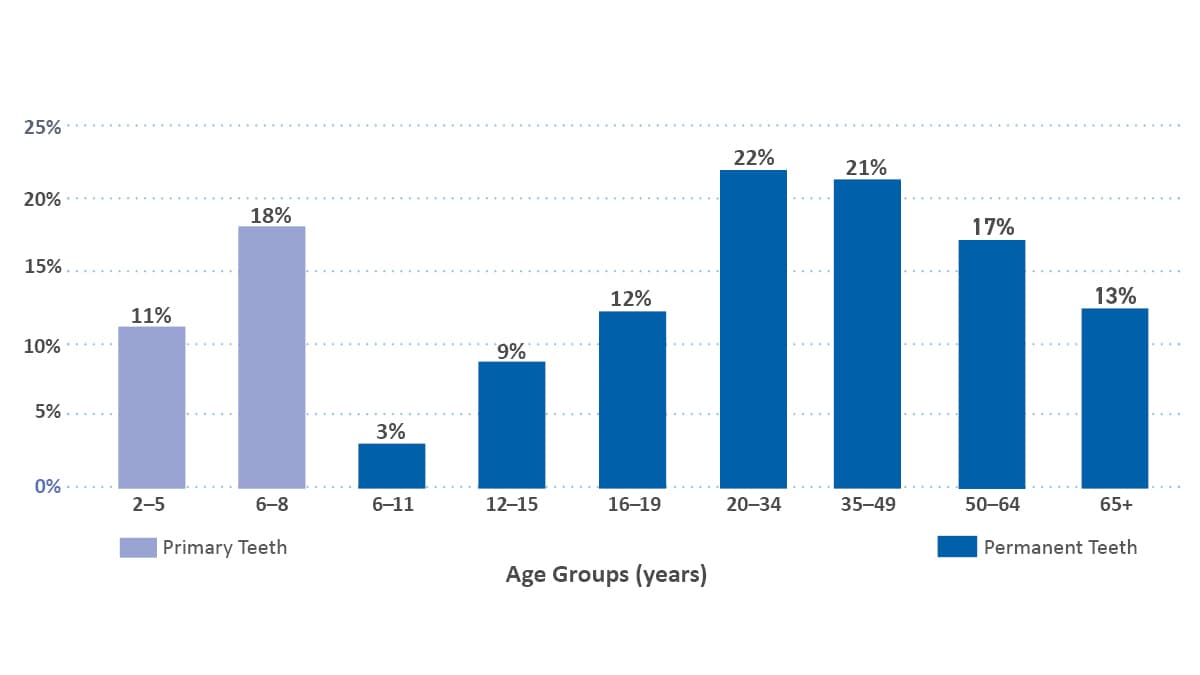At a glance
This page provides several cross-cutting findings from the 2024 Oral Health Surveillance Report.

Editorial Comment
During 2017–March 2020, the prevalence of untreated tooth decay in primary teeth was higher among children aged 6–8 years (18%) than among those aged 2–5 years (11%) (Figure). The prevalence of untreated decay in permanent teeth increased from 3% among children aged 6–11 years to about 22% among adults aged 20–34 years, then decreased to 13% among adults 65 years or older.
This report found that disparities in oral health status remain for many groups. Members of racial and ethnic minority groups, people from families with low incomes, those with less education, and smokers have the highest levels of untreated tooth decay and tooth loss or the lowest levels of treated tooth decay and tooth retention. These patterns have remained the same since they were first reported in the 2000 Oral Health in America: A Report of the Surgeon General.1
In this report, we did not compare estimates from the NHANES 2017–March 2020 prepandemic data files to previous surveillance reports. NCHS recommends that trend comparisons for subgroups—including comparisons based on age, sex, and race and ethnicity—between the 2017–March 2020 prepandemic data files and previous NHANES cycles be interpreted with caution, especially when denoting unexpected changes in the historical trend.23

- U.S. Department of Health and Human Services. Oral Health in America: A Report of the Surgeon General. National Institute of Dental and Craniofacial Research, National Institutes of Health; 2000.
- Akinbami LJ, Chen T-C, Davy O, et al. National Health and Nutrition Examination Survey, 2017–March 2020 prepandemic file: sample design, estimation, and analytic guidelines. Vital Health Stat 2. 2022;190.
- Stierman B, Afful J, Carroll MD, et al. National Health and Nutrition Examination Survey 2017–March 2020 prepandemic data files—development of files and prevalence estimates for selected health outcomes. Natl Health Stat Rep. 2021;158.
